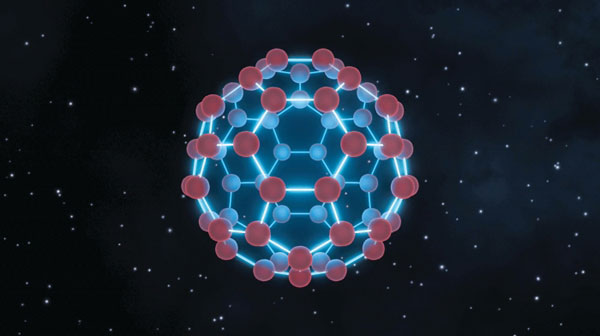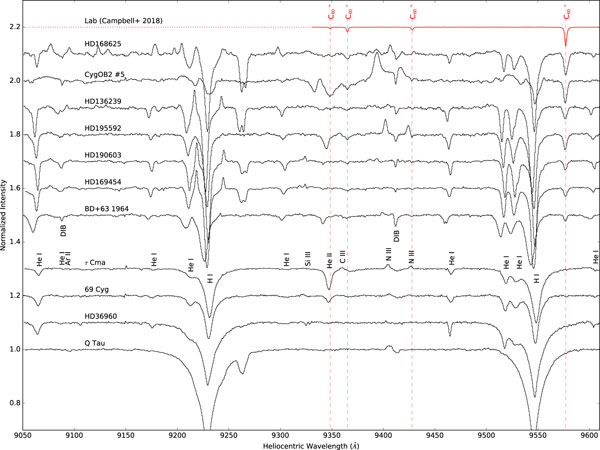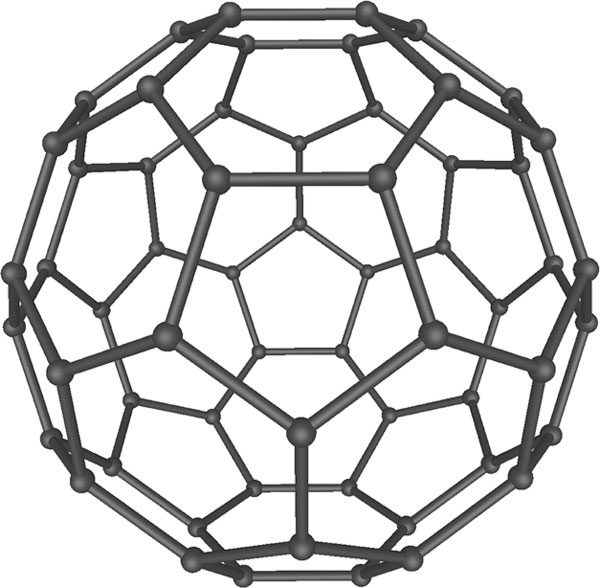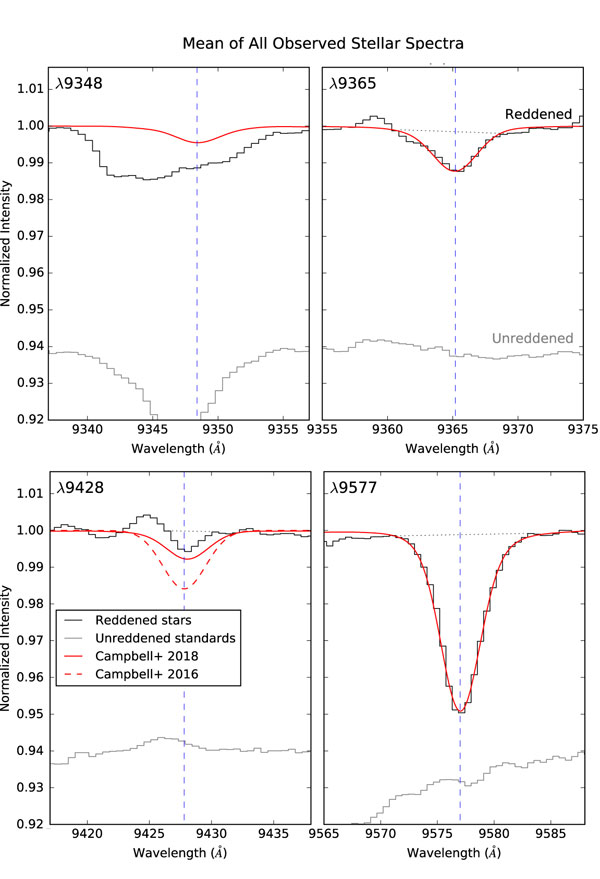From a jumble of confusing clues in Hubble observations of interstellar space, scientists have picked out evidence of a celebrity molecule: ionized Buckminsterfullerene, or buckyballs.

NASA / JPL-Caltech
Sorting Out Diffuse Signals
What makes up the tenuous gas and dust that pervades our galaxy, filling the space between stars? What kinds of complex molecules can form naturally in our universe, outside of the potentially contrived conditions of Earth-side laboratories? Where might these molecules form, and how are they distributed throughout space?

Cordiner et al. 2019
These are among the many open questions regarding the chemistry of our universe. One particular, longstanding puzzle for astronomers is the cause of what’s known as “diffuse interstellar bands”: hundreds of broad absorption features that appear in optical to near-infrared spectra of reddened stars.

Mstroek
These features are not caused by the stars themselves, so they must be due to absorption of light by the diffuse interstellar medium (ISM) between us and the stars. But the jumble of hundreds of features — and the unknown conditions under which they are produced — has made it incredibly challenging to identify the individual molecules present in the diffuse ISM.
A new study led by Martin Cordiner (NASA Goddard SFC; Catholic University of America) presents observations from the Hubble Space Telescope — thus avoiding the additional complication of absorption features from the Earth’s atmosphere — that explore these diffuse interstellar bands further. Hubble’s sightlines toward 11 stars provide confirmation of one special molecule within this jumble: Buckminsterfullerene.
A Celebrity Molecule
The C60+ ion, formally known as Buckminsterfullerene and informally known as a “buckyball”, is an enormous molecule consisting of 60 carbon atoms arranged in a soccer-ball shape. Previously, the largest known molecules definitively detected in the diffuse interstellar medium contained no more than three atoms heavier than hydrogen — so the detection of buckyballs represents a dramatic increase in the known size limit!

Cordiner et al. 2019
Cordiner and collaborators use a novel scanning technique to obtain ultra-high signal-to-noise spectra of seven stars that are significantly reddened by obscuring ISM and four stars that are not. They then search for absorption signals at four wavelengths — 9348, 9365, 9428, and 9577 Å — predicted by laboratory experiments to be associated with C60+.
The authors find obtain reliable detections of the three strongest of these absorption lines in the spectra toward the seven reddened stars, and find no sign of this absorption in the four unobscured stars. The 9348 Å absorption was not detected, but as this is predicted to be a very weak feature, this result is not surprising. The relative strengths of the three detected lines also fit with laboratory predictions.
The consistency of Cordiner and collaborators’ results with prediction provides the strongest confirmation yet of the presence of buckyballs in the diffuse ISM. This detection may help us to characterize other components of the diffuse ISM and better understand the conditions under which complex molecules exist in the extreme, low-density environment of interstellar space.
Citation:
“Confirming Interstellar C60+ Using the Hubble Space Telescope,” M. A. Cordiner et al 2019 ApJL 875 L28. doi:10.3847/2041-8213/ab14e5
This post originally appeared on AAS Nova, which features research highlights from the journals of the American Astronomical Society.
 1
1









Comments
Dobsonite
May 8, 2019 at 2:54 am
...and there are still people who assert that there is no planned symmetry or order in the Universe, that it all just "happened"......
You must be logged in to post a comment.
You must be logged in to post a comment.